- Chromium(III) chloride
-
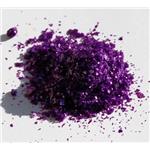
- $25.00 / 1kg
-
2024-04-12
- CAS:10025-73-7
- Min. Order: 1kg
- Purity: 99%
- Supply Ability: 50000tons
- Chromium(III) chloride
-
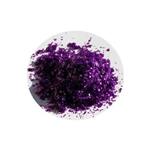
- $0.00 / 25KG
-
2023-08-01
- CAS:10025-73-7
- Min. Order: 1KG
- Purity: 99%
- Supply Ability: 50000KG/month
- Chromium(III) chloride
-
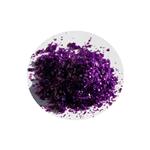
- $10.00 / 1KG
-
2023-03-16
- CAS:10025-73-7
- Min. Order: 1KG
- Purity: 99%
- Supply Ability: 10 mt
|
| Product Name: | Chromium(III) chloride | | Synonyms: | Chromium(III)chloride,anhydrousChromium(III)chloride,anhydrous;Chromium(III) trichloride;Trichlorochromium(III);Chromium(III) chloride, anhydrous, 99.9% (metals basis);Chromic chloride: (Chromium(III) chloride);Chromium (III) Choride, anhydrous;Chromium(III) chloride,99%,sublimed, anhydrous;Chromium(III) chloride, sublimed, anhydrous, 99% | | CAS: | 10025-73-7 | | MF: | Cl3Cr | | MW: | 158.36 | | EINECS: | 233-038-3 | | Product Categories: | Catalysis and Inorganic Chemistry;Chemical Synthesis;Chromium Salts;ChromiumMetal and Ceramic Science;Crystal Grade Inorganics;Metal and Ceramic Science;Salts;Inorganics;metal halide;chromium salt, electroplating | | Mol File: | 10025-73-7.mol | 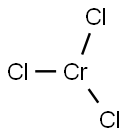 |
| | Chromium(III) chloride Chemical Properties |
| Melting point | 1152 °C | | Boiling point | 1300°C | | density | 2.87 g/mL at 25 °C(lit.) | | vapor pressure | 0.001Pa at 20℃ | | storage temp. | Store below +30°C. | | solubility | slightly soluble in H2O | | form | flakes | | Specific Gravity | 2.87 | | color | Violet | | Water Solubility | Soluble in alcohol, water. | | Sensitive | Hygroscopic | | Merck | 14,2222 | | Exposure limits | NIOSH: IDLH 25 mg/m3; TWA 0.5 mg/m3 | | Stability: | hygroscopic | | LogP | -3 at 20℃ | | CAS DataBase Reference | 10025-73-7(CAS DataBase Reference) | | EPA Substance Registry System | Chromium(III) chloride (10025-73-7) |
| | Chromium(III) chloride Usage And Synthesis |
| Physical Properties | Reddish violet crystals; hexagonal plates; density 2.87g/cm3; melts at 1,152°C; decomposes at 1,300°C; slightly soluble in water. The color of hexahydrates range from light-green to violet; all are hygroscopic; density 1.76 g/cm3; soluble in water and ethanol; insoluble in ether; dilute aqueous solutions are violet in color.
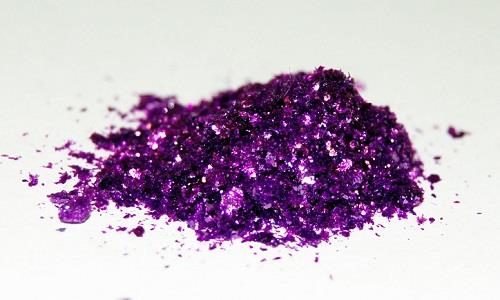
Chromium(III) chloride can be used in the formation of a catalytic system for the conversion of glucose into 5-hydroxymethylfurfural (HMF). It can also be used in the preparation of ionic liquid mixtures using choline chloride and water with improved ion mobility and conductivity.
The vapor-phase co-reductions with other metal halides by hydrogen results in finely divided intermetallics with applications as structural materials or compounds with useful thermoelectric, magnetic, and oxidation-resistance properties. | | Uses | Chromium(III) chloride is used for chromium plating; as textile mordant; in tanning; as a waterproofing agent; and as catalyst for polymerization of olefins.
| | Preparation | Chromium(III) chloride hexahydrate may be prepared by treating chromium hydroxide with hydrochloric acid: /> Cr(OH)3 + 3HCl + 3H2O → CrCl3•6H2O The anhydrous chromium(III) chloride may be obtained by heating the hydrated salt CrCl3•6H2O with SOCl2 and subliming the product in a stream of chlorine at 600°C. Alternatively, the red-violet anhydrous chloride can be obtained by passing chlorine gas over a mixture of chromic oxide and carbon:
Cr2O3 + 3C +3Cl2 → 2CrCl3 + 3CO
| | Reactions | Chromium(III) chloride at elevated termperatures decomposes to chromium( II) chloride and chlorine:
2CrCl3→2CrCl2 + Cl2
Heating with excess chlorine produces vapors of chromium(IV) chloride, CrCl4. The tetrahedral tetrachloride is unstable, and occurs only in vapor phase.
When heated with hydrogen, it is reduced to chromium(II) chloride with the formation of hydrogen chloride:
2CrCl3 + H2→2CrCl2 + 2HCl
Chromium(III) chloride has very low solubility in pure water. However, it readily dissolves in the presence of Cr2+ ion. Reducing agents such as SnCl2 can “solubilize” CrCl3 in water. It forms adducts with many donor ligands. For example, with tetrahydrofuran (THF) in the presence of zinc, it forms the violet crystals of the complex CrCl3•3THF.
| | Description | Chromic chloride is a highly corrosive, blueor greenish to black crystalline solid. Molecularweight =158.35; Boiling point (decomposes) =1300℃;Freezing/Melting point =1152℃ (dissociates above1300℃). Hazard Identification (based on NFPA-704 MRating System): Health 3, Flammability 0, Reactivity 0.Insoluble in water (reaction) | | Chemical Properties | Chromic chloride is a highly corrosive, Blue or greenish to black crystalline solid. | | Uses | Supplement(trace mineral).
Chromium(III) chloride and chromium(III) sulfate have been used as dietary supplements (approved for themanufacture of foods for particular nutritional uses and in food supplements in the European Union), whereas the organic chromium(III) complexes chromium picolinate and nicotinate are not approved in the European Union but find widespread uses (e.g. in the USA) inmultivitamin, multimineral products (Riihimaki & Luotamo, 2006).They are also marketed for weight loss purposes and athletic supplements. | | Uses | Chromium chloride and chromium sulfate have been used as dietary supplements. Chromium(III) chloride and chromium(III) sulfate can be used in the manufacture of food for particular nutritional uses and in food supplements. It is found in miscellaneous applications, such as catalysts, hardeners, mordents, crosslinking and binding agents. It is used to make very pure chromium and other chromium compounds, as a mordant in dyeing cotton, and in chromizing metals. It is too used for trivalent electroplating . | | Air & Water Reactions | The rate of solution for water is extremely slow, pH of 0.2 M. aqueous solution is 2.4. | | Reactivity Profile | When heated to decomposition, CHROMIUM (III) CHLORIDE emits toxic fumes of chlorine containing compounds. Violent reaction with lithium, nitrogen. Incompatible with strong oxidizers. [EPA, 1998]. | | Hazard | A poison. | | Health Hazard | CHROMIUM (III) CHLORIDE displays high dermal toxicity, and moderate oral toxicity. | | Flammability and Explosibility | Non flammable | | Safety Profile | Poison by skin contact,
inhalation, and intraperitoneal routes.
Experimental teratogenic and reproductive
effects. Human mutation data reported.
Questionable carcinogen. Reacts violently
with lithium under nitrogen atmosphere.
When heated to decomposition it emits
toxic fumes of Cl-. | | Potential Exposure | Chromic chloride is used for production of solutions of basic chlorides and as a catalyst for polymerization of olefins and other organic reactions; in chromizing; in the manufacture of chromium metal and compounds; as a textile mordant; in tanning; in corrosion inhibitors; and as a waterproofing agent. A nutritional supplement. | | First aid | If this chemical gets into the eyes, remove anycontact lenses at once and irrigate immediately for at least15 min, occasionally lifting upper and lower lids. Seek medical attention immediately. If this chemical contacts theskin, remove contaminated clothing and wash immediatelywith soap and water. Seek medical attention immediately. Ifthis chemical has been inhaled, remove from exposure,begin rescue breathing (using universal precautions, including resuscitation mask) if breathing has stopped and CPR ifheart action has stopped. Transfer promptly to a medicalfacility. When this chemical has been swallowed, get medical attention. Give large quantities of water and inducevomiting. Do not make an unconscious person vomit. | | storage | : Color Code—White: Corrosive or Contact Hazard;Store separately in a corrosion-resistant location. ColorCode—Green: General storage may be used. Prior to working with this chemical you should be trained on its properhandling and storage. Store in tightly closed containers in acool, well-ventilated area away from oxidizing agents andwater | | Shipping | UN1759 Corrosive solids, n.o.s., Hazard class: 8; Labels: 8-Corrosive material, Technical Name Required. UN1760 Corrosive liquids, n.o.s., Hazard class: 8; Labels: 8-Corrosive material, Technical Name Required. | | Purification Methods | Sublime the chloride in a stream of dry HCl. Alternatively, the impure chromic chloride (100g) is added to 1L of 10% aqueous K2Cr2O7 and several millilitres of conc HCl, and the mixture is brought to a gentle boil with constant stirring for 10minutes. (This removed a reducing impurity.) The solid is separated and washed by boiling with successive 1L lots of distilled water until the wash water no longer gives a test for chloride ion, then dry it at 110o [Poulsen & Garner J Am Chem Soc 81 2615 1959, Hein & Herzog in Handbook of Preparative Inorganic Chemistry (Ed. Brauer) Academic Press Vol II p 1338 1965]. | | Incompatibilities | Reacts with water and strong oxidizers. Contact with strong acids or acid fumes may produce highly toxic chloride fumes. May attack certain steels, causing pitting attack and stress corrosion | | Waste Disposal | Precipitate as chromium hydroxide. Dewater the sludge and dispose of the compacted sludge in single-purpose dumps |
| | Chromium(III) chloride Preparation Products And Raw materials |
|